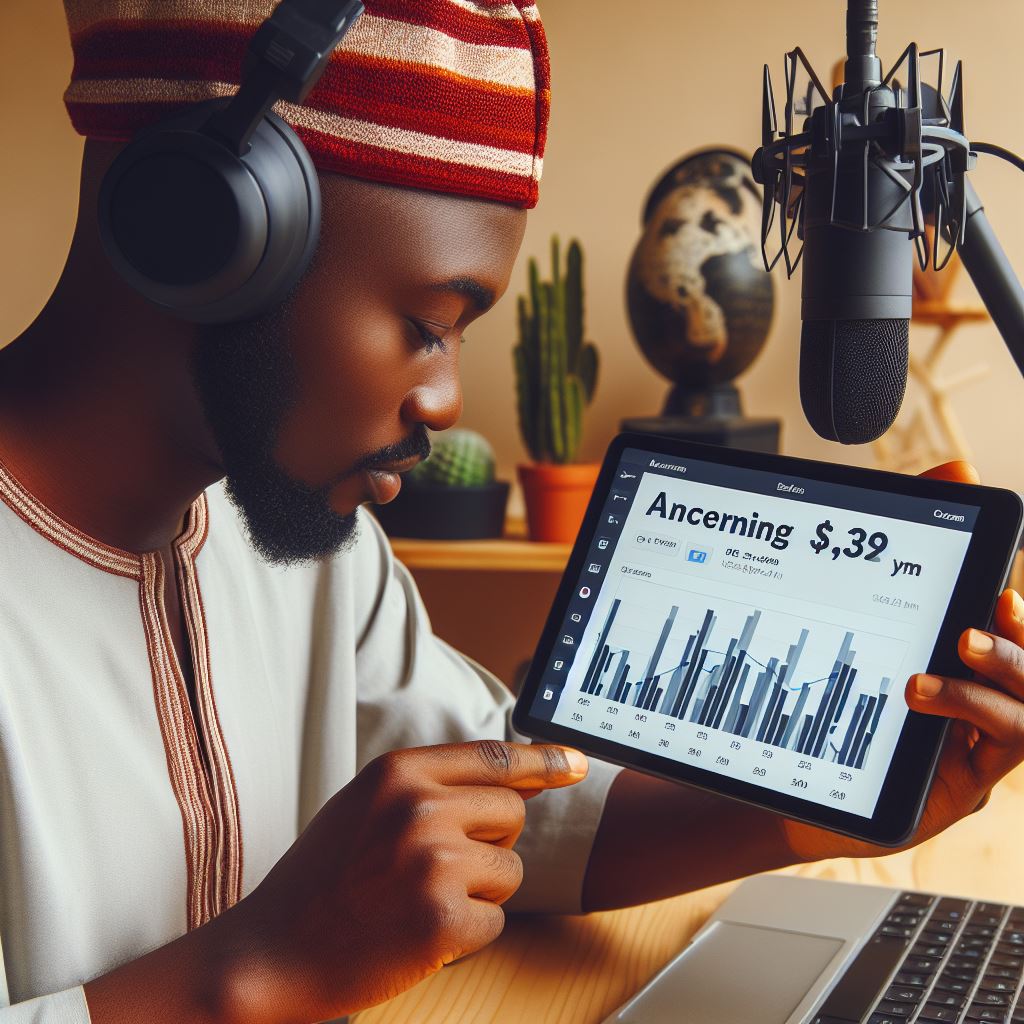Introduction
Blog design plays a crucial role in attracting readers to a blog, as it is the first thing they notice.
An effective blog design greatly impacts the user experience, ensuring that visitors stay and engage with the content.
This blog post aims to provide a brief explanation of the goals associated with optimizing blog design to attract and retain readers.
Importance of Blog Design in Attracting Readers
Creating a visually appealing and user-friendly blog is essential in capturing readers’ attention and making them stay.
When a blog has a well-designed layout, it becomes inviting, increasing the chances of readers exploring the content further.
Compelling graphics, typography, and color schemes contribute to a positive first impression, attracting readers to delve deeper.
How Blog Design Impacts User Experience
Smooth navigation through intuitive menus, clear headings, and organized categories enhances user experience, minimizing frustration.
A clean and clutter-free design with ample white space allows readers to focus on the text and easily find relevant information.
Responsive design that adapts to different devices ensures easy accessibility, accommodating readers who access the blog on mobile or tablets.
Goals for this Blog Post
The primary goal is to emphasize the essential role of blog design in attracting readers and the subsequent impact on user experience.
Providing practical tips and guidelines for optimizing blog design will empower bloggers to create engaging and successful blogs.
By understanding the significance of blog design, readers can take actionable steps to captivate their audience and achieve their blogging goals.
Key Elements of Blog Design
Having an attractive blog design is crucial for attracting and retaining readers.
This section delves into crucial elements shaping engaging blog design: prioritizing clear.
Also user-friendly navigation, ensuring responsive, mobile-friendly design, crafting visually appealing layouts and typography, and optimizing for fast loading times.
Clear and user-friendly navigation
A clear and user-friendly navigation system is essential for guiding readers through a blog.
Easy-to-find menus and categories help readers find the content they are interested in quickly.
By organizing content effectively, bloggers can make it easier for readers to navigate, ensuring a positive user experience.
- Easy-to-find menus and categories are essential for guiding readers through the blog.
- Organizing content effectively involves creating logical categories and submenus for easy access.
Responsive and mobile-friendly design
In an era where mobile devices are increasingly popular, having a responsive and mobile-friendly design is paramount.
With the growing number of mobile users, it is crucial to optimize the blog for various devices.
This involves using responsive layouts that adjust seamlessly across different screen sizes and resolutions.
Additionally, utilizing adaptive images ensures faster load times and a better user experience on mobile devices.
Personalized Financial Consulting – Tailored for You
Get a custom financial plan made just for you in 1-3 days. Clear strategies, actionable steps, and unlimited revisions.
Get Started- The increasing number of mobile users emphasizes the need for a mobile-friendly blog design.
- Optimizing the blog for various devices includes using responsive layouts and adaptive images.
Visually appealing layout and typography
The visual appeal of a blog is another crucial aspect. Colors and fonts can significantly impact how readers perceive and engage with the content.
Choosing an appropriate color scheme that aligns with the blog’s branding and target audience is essential.
Similarly, selecting legible fonts and maintaining a consistent typography hierarchy enhances readability and aesthetics.
- Colors and fonts play a crucial role in capturing readers’ attention and conveying the blog’s brand.
- Best practices for choosing an aesthetically pleasing design involve considering readability and visual hierarchy.
Fast loading times
Fast loading times are crucial for keeping readers engaged.
Slow page loading can result in high bounce rates and discourage readers from exploring further. Therefore, optimizing loading speed is crucial.
Techniques such as image compression, minification of CSS and JavaScript files, and leveraging browser caching can significantly improve loading times and ensure a seamless user experience.
- Quick page loading is significant for providing an optimal user experience and reducing bounce rates.
- Optimization techniques, such as image compression and minification, can enhance loading speed.
In summary, by paying attention to key elements of blog design, bloggers can attract and retain readers.
Implementing a clear and user-friendly navigation system enables readers to find content effortlessly.
A responsive and mobile-friendly design ensures that the blog is accessible to users on various devices.
Creating a visually appealing layout and typography captures readers’ attention and enhances the overall experience.
Lastly, optimizing loading speed contributes to a smooth user experience and keeps readers engaged.
Incorporating these elements into blog design will undoubtedly attract more readers and promote a successful blog.
Read: Affiliate Blogging: Start Earning
Importance of Readability
Readability plays a crucial role in the success of a blog.
Without a well-designed and readable layout, readers may quickly lose interest and navigate away.
To ensure that your blog attracts and retains readers, focus on optimizing readability through the use of white space, proper spacing, font choice and size, as well as consistency in formatting and styling.
Use of white space and proper spacing
Benefits of using white space in enhancing readability
White space, also known as negative space, refers to the empty areas between elements on a page.
Incorporating sufficient white space in your blog design can significantly enhance readability.
It gives the content room to breathe, making it easier for readers to scan and consume information.
By reducing visual clutter, white space helps readers focus on the text and improves overall comprehension.
White space increases the legibility of text and improves comprehension.
Techniques to improve spacing between elements
To improve spacing between elements, use proper indentation for paragraphs and headings.
Avoid overcrowding by leaving ample space between lines and paragraphs.
Break up long paragraphs into shorter ones to create a visually pleasing reading experience.
Additionally, consider adding appropriate padding and margins around images and other graphical elements to prevent them from appearing cramped.
Proper spacing between paragraphs, headings, and images creates a visually appealing layout.
Font choice and size
Impact of font style and size on readability
Font choice and size greatly influence the readability of your blog.
Select a font style that is clear, legible, and easy on the eyes.
Sans-serif fonts, such as Arial or Helvetica, are generally recommended for online reading, as they appear cleaner on screens.
Take into account the size of the font as well – aim for a size that is comfortable for most readers, not too small or too large.
Selecting a clear and easy-to-read font, in an appropriate size, ensures a smooth reading experience.
Considerations for selecting appropriate fonts for the blog
When choosing fonts for your blog, consider the theme and tone you want to convey.
If your blog has a professional feel, opt for more traditional fonts.
On the other hand, if your content is more creative or casual, you can experiment with unique fonts that reflect your blog’s personality.
However, be cautious about using too many different font styles, as it may create a disjointed and distracting reading experience.
Choose fonts that complement the blog’s theme, and avoid using too many different font styles.
Consistency in formatting and styling
Benefits of maintaining a consistent visual style
Consistency in formatting and styling is integral to a well-designed blog.
It helps establish a strong visual identity and fosters trust with readers.
By maintaining a consistent visual style throughout your blog, you create a sense of cohesion and professionalism.
This includes using the same font styles, sizes, and colors for headings, subheadings, and body text.
Consistency also applies to the formatting of lists, bullet points, and other textual elements.
Consistency creates a cohesive and professional appearance, enhancing the overall user experience.
Tips for creating a uniform look throughout the blog
To achieve a uniform look throughout your blog, create a style guide or template that outlines the specific formatting rules you will adhere to.
This ensures that all blog posts follow a standardized structure, making it easy for readers to navigate and comprehend the content.
Additionally, establish a color scheme that is used consistently across the blog, creating a visually pleasing and coherent aesthetic.
Use consistent formatting for headings, paragraphs, and lists, and apply a color scheme across the blog.
In a nutshell, readability is a critical factor in attracting and retaining readers to your blog.
By strategically using white space and proper spacing, selecting appropriate fonts.
And maintaining consistency in formatting and styling, you can enhance the overall readability of your blog and create an enjoyable reading experience for your audience.
Read: Podcast Monetization: Proven Ways
Engaging Visual Content
Use of high-quality images
Impact of visually appealing images on reader engagement
Visual content plays a crucial role in attracting and engaging readers on blogs.
Images not only enhance the aesthetics of a blog but also have a significant impact on reader engagement.
When visually appealing images are used, they immediately capture the attention of readers and encourage them to explore the content further.
High-quality images make the blog posts more visually appealing, increasing the chances of readers staying on the page and returning for more.
Sources for finding free and high-quality images
Finding high-quality images for a blog may seem challenging, especially if you have limited resources.
However, there are numerous sources available that provide free and high-quality images for commercial use.
Websites like Unsplash, Pixabay, and Pexels offer a wide range of visually stunning images that bloggers can utilize without worrying about copyright issues.
These platforms have a variety of categories and search options, making it easy to find the perfect image to enhance your blog posts.
Unlock Your Path to Financial Freedom
Personalized savings and investment strategies tailored to your financial goals. Let's help you take control of your future with a plan designed just for you.
Get StartedIncorporation of videos and infographics
Benefits of multimedia content in blog posts
While images are essential, incorporating multimedia content such as videos and infographics into blog posts can have even more significant benefits.
Videos allow bloggers to create dynamic and engaging content that can convey information more effectively than text alone.
Additionally, infographics are visual representations of data and statistics, making complex information easier to understand and digest.
By including these forms of multimedia content, bloggers can provide a diverse and engaging experience for their readers.
Tools and platforms for creating engaging visual content
Creating engaging visual content does not have to be a complicated task.
There are numerous tools and platforms available to help bloggers produce captivating multimedia elements.
Video editing software like Adobe Premiere Pro and Final Cut Pro allows bloggers to create professional-looking videos with ease.
For infographics, tools like Canva and Piktochart provide customizable templates and user-friendly interfaces.
These resources empower bloggers to create visually appealing content without the need for extensive design knowledge.
Attention-grabbing featured images and thumbnails
Importance of enticing readers with attractive visuals
One of the first things readers see when accessing a blog is the featured image or thumbnail associated with a blog post.
These visual elements serve as the gateway to the content and can significantly impact whether a reader chooses to click and explore further.
It is crucial to entice readers with attractive visuals that accurately represent the content and evoke curiosity.
By capturing the readers’ attention with compelling featured images and thumbnails, bloggers increase the likelihood of readers engaging with their content.
Techniques for creating compelling featured images and thumbnails
Creating compelling featured images and thumbnails requires strategic planning and execution.
First, it is essential to choose images that are relevant to the blog post’s topic and align with the overall theme of the blog.
Additionally, adding text overlays or attention-grabbing headlines to the images can further pique readers’ interest.
Using contrasting colors and bold typography can help make the text stand out and catch the eye.
Experimenting with different layouts and graphic elements can also enhance the overall appeal of the featured images and thumbnails.
Ultimately, engaging visual content is a pivotal aspect of blog design that can attract and retain readers.
By utilizing high-quality images, incorporating multimedia content, and creating attention-grabbing featured images and thumbnails, bloggers can enhance reader engagement and create a visually appealing blog.
Remember to leverage the available resources and tools to make the most out of visual content and provide an immersive experience for readers.
Read: YouTube SEO: Rank Higher Now

See Related Content: YouTube Growth: Fast Earnings
Discover More: Choosing Blog Topics: Tips
Learn More: TikTok Fame: Money Making
Optimizing for SEO and User Experience
Effective use of headings and subheadings
Role of headings in organizing content and improving readability
Headings play a crucial role in organizing blog content and enhancing its readability.
They provide a clear structure and hierarchy to the information presented, making it easier for readers to skim and locate relevant sections.
With proper headings, readers can quickly grasp the main points and decide if they want to delve deeper into the content.
Using headings also helps search engines understand the context and relevance of the content.
Search engine crawlers analyze headings to determine the primary topics discussed on a webpage.
By accurately labeling headings with relevant keywords, bloggers can improve their blog’s visibility in search engine results pages (SERPs).
SEO optimization tips for headings
To optimize headings for search engines, it’s important to follow these SEO best practices:
- Use descriptive and keyword-rich headings: Ensure that your headings accurately reflect the content beneath them. Incorporate relevant keywords to signal the topic of each section.
- Include hierarchical structure: Utilize Heading 1, Heading 2, Heading 3, and so on, to create a clear hierarchy. This not only helps search engines understand the content’s organization but also enhances readability.
- Balance SEO with readability: While optimizing headings for SEO is essential, it’s crucial to maintain readability. Avoid keyword stuffing or creating overly long headings that may confuse or overwhelm readers.
- Utilize header tags in the HTML code: Structure your content using HTML header tags (h1, h2, h3, etc.) to define the importance and hierarchy of the headings. Search engines rely on header tags to understand the content’s structure accurately.
Utilizing meta tags, meta descriptions, and alt tags
Explanation of the importance of metadata for search engines
Metadata plays a vital role in optimizing blogs for search engines.
Meta tags provide information about your blog post or webpage to search engines, enabling them to understand the content and purpose accurately.
Three essential types of metadata are meta tags, meta descriptions, and alt tags.
- Meta tags: These tags provide search engines with information about the page’s title, keywords, and description. Optimizing meta tags helps search engines categorize and present content accurately in SERPs.
- Meta descriptions: Meta descriptions are HTML attributes that provide a concise summary of the content on a webpage. Well-written meta descriptions entice users to click on your blog in search results, leading to increased organic traffic.
- Alt tags: Alt tags are descriptions added to images, allowing search engines to comprehend what an image represents. Optimizing alt tags with relevant keywords not only improves SEO but also makes your content more accessible to visually impaired users.
Best practices for optimizing metadata for better ranking
To make the most of metadata for improved ranking, follow these best practices:
- Write unique and descriptive meta tags: Craft unique meta tags for each blog post, including relevant keywords and a concise summary to entice users.
- Limit meta descriptions to 150-160 characters: Avoid lengthy meta descriptions, as search engines often truncate them in search results. Make your description compelling and clear within the character limit.
- Incorporate target keywords naturally: Utilize keywords that accurately represent your content but avoid keyword stuffing. Make sure the chosen keywords align with the overall topic and maintain a natural flow.
- Add alt tags to images: Describe images using alt tags that are relevant to the content and incorporate target keywords, where appropriate. This helps search engines understand the visual elements of your blog post.
Incorporating social sharing buttons
Benefits of allowing readers to share content easily
Incorporating social sharing buttons on your blog encourages readers to share your content with their own networks. This has numerous benefits:
- Increased visibility: When readers share your content, it reaches a larger audience, potentially boosting your blog’s visibility and attracting new readers.
- Enhanced credibility and trust: Social shares act as endorsements of your blog, building credibility and trust among potential readers.
- Increase in referral traffic: Social sharing creates additional sources of referral traffic to your blog, amplifying your reach beyond organic search results.
Tips for adding social sharing buttons to the blog
To effectively incorporate social sharing buttons, consider the following tips:
Take Control of Your Debt Today
Struggling with debt? Get personalized strategies to pay off your debts, negotiate with creditors, and rebuild your credit. Your path to financial freedom starts here.
Get Help- Choose relevant social media platforms: Select social media platforms that align with your target audience and industry. Including buttons for popular platforms such as Facebook, Twitter, LinkedIn, and Pinterest can be a good starting point.
- Place buttons in visible locations: Position social sharing buttons prominently within your blog post, making them easily accessible to readers. Common locations include the top or bottom of the post, as well as floating buttons that move as readers scroll.
- Test different button designs: Experiment with various button designs to find the style that best matches your blog’s aesthetics and encourages more click-throughs.
- Monitor social sharing metrics: Keep track of the social sharing activity on your blog to understand which content resonates the most with your audience. This data can help you refine your content strategy and engage readers more effectively.
Basically, optimizing your blog for SEO and user experience involves strategic use of headings, metadata, and social sharing buttons.
By implementing these techniques effectively, you can attract more readers, improve your search engine ranking, and create a satisfying user experience.
Read: Successful Blogging: Nigerian Guide
Learn More: Blogging Consistency: Key to Profit
Discover More: Copywriting: Convert & Earn
Conclusion
In this section, we discussed various tips to attract and retain readers through effective blog design.
We explored the importance of creating a visually appealing blog layout, optimizing for mobile devices, and using clear navigation menus.
Investing time and effort in blog design is crucial for creating a positive user experience.
A well-designed blog not only enhances the aesthetic appeal but also improves navigation and readability, making it more likely for readers to engage with the content.
To maximize the impact of your blog design, it is highly recommended to implement the outlined tips.
By doing so, you can effectively attract and retain readers, increase engagement, and establish yourself as an authority in your niche.
So, take the time to analyze your current blog design, make necessary adjustments, and prioritize the needs and preferences of your target audience.
By investing in a well-designed blog, you can create a welcoming and visually appealing space that will captivate and retain readers, ultimately leading to the success and growth of your blog.




